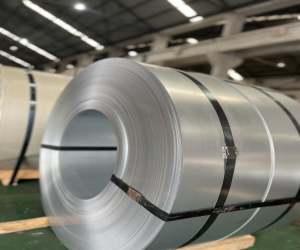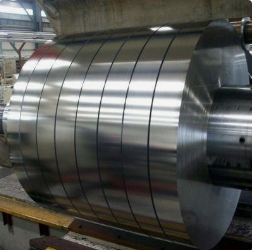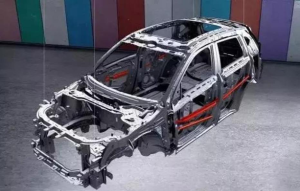CR180P steel
What is phosphorus-strengthened steel?

Phosphorus strengthened steel is a steel that has been strengthened by adding a small amount of phosphorus. This steel is also known as high phosphorous steel or HSLA (high strength low alloy) steel.
Phosphorus is a chemical element that can be added to steel in small amounts to increase its strength and hardness. When phosphorus is added at about 0.1 to 0.3 percent, it forms a solid solution with iron atoms, increasing strength and hardness without significantly reducing ductility or toughness. In addition, phosphorus improves the machinability of steel and increases its corrosion resistance.
Phosphorus-strengthened steels are commonly used in a variety of applications that require high strength and toughness, such as construction equipment, automotive parts and pipes. However, it should be noted that too much phosphorus can negatively affect the properties of the steel, such as increased brittleness and decreased weldability, so the amount of phosphorus added must be carefully controlled.
Is CR180P steel a phosphorus-strengthened steel?
Yes, CR180P steel is a phosphorus strengthened steel. It is a dual-phase steel strengthened by the addition of small amounts of phosphorus (typically ≤0.030%). Adding phosphorus to steel increases its strength and hardness without significantly reducing its ductility or toughness. CR180P steel is commonly used in automotive and construction applications where high strength and good formability are required.
What are the characteristics of CR180P steel?
CR180P steel is a dual phase high strength low alloy (HSLA) steel with good formability and high strength. Some of the key properties of CR180P steel include:
High strength: Compared with other steel types, CR180P steel has higher yield strength (≥180 MPa) and tensile strength (340-420 MPa). This makes it suitable for applications requiring high strength and load carrying capacity.
Good formability: CR180P steel has good formability, that is, it is easy to form and shape without cracking or breaking. This makes it suitable for applications requiring complex shapes or parts.
Dual-phase structure: CR180P steel has a dual-phase structure, which consists of soft ferrite phase and hard martensite phase. This gives it a good combination of strength and ductility.
Phosphorus Strengthening: CR180P steel is strengthened by adding small amounts of phosphorus, which increases its strength and hardness without significantly reducing its ductility or toughness.
Corrosion resistance: CR180P steel has good corrosion resistance and is suitable for use in harsh environments.
Lightweight: Compared to other types of high strength steel, CR180P steel is relatively lightweight and suitable for applications where weight is a concern.
Overall, CR180P steel is a versatile and durable material suitable for a wide range of applications in the automotive and construction industries.
What is the chemical composition of CR180P steel?
CR180P is the name of a cold-rolled dual-phase steel with high yield strength. The chemical composition of CR180P steel usually includes:
Carbon (C): ≤0.08%
Manganese (Mn): ≤0.50%
Phosphorus (P): ≤0.030%
Sulfur (S): ≤0.025%
Aluminum (Al): ≥0.015%
Titanium (Ti): ≤0.100%
Boron (B): ≤0.005%
Iron (Fe): Balanced
The exact chemical composition of CR180P steel may vary slightly by manufacturer or supplier. It is important to note that the chemical composition of steel affects its properties and performance, so choosing the right grade for a particular application is important.
What are the mechanical properties of CR180P steel?
The mechanical properties of CR180P steel depend on the specific manufacturing process used, but generally include the following:
Tensile strength: 340-420 MPa
Yield strength: ≥180 MPa
Elongation: ≥35%
Modulus of Elasticity: 200 GPa (29,000 ksi)
Poisson’s ratio: 0.3
These values are based on standard test methods and may vary depending on specific conditions tested, such as sample size, shape and temperature. It should be noted that the mechanical properties of CR180P steel are also affected by processing and forming conditions, such as annealing temperature and rolling direction.
Is CR180P steel hard enough?

Whether CR180P steel is hard enough depends on the specific application and the level of hardness required for that application. CR180P steel is a high-strength, low-alloy (HSLA) steel commonly used in automotive and construction applications where good formability and high strength are required.
The hardness of CR180P steel may vary depending on the specific manufacturing process used, but is typically between 50-60 HRB (Rockwell B hardness) or 75-85 HRB after tempering.
Whether this level of hardness is sufficient for a particular application will depend on the specific requirements of that application. For example, if high wear resistance is required, a harder steel may be required. However, if good formability and ductility are more important, a softer steel like CR180P may be suitable.
How is CR180P steel welded?
CR180P steel can be welded using a variety of welding methods, including resistance spot welding, laser welding, and gas metal arc welding (GMAW).
Resistance spot welding is a common method used in automotive manufacturing to join sheet metal parts, including CR180P steel. In this process, electric current is passed through two metal plates held together by electrodes. The heat from the electric current melts the metal pieces and fuses them together.
Laser welding is another method that can be used to weld CR180P steel. In this process, a laser beam is directed at the metal sheets, melting and fusing them together.
Gas metal arc welding (GMAW), also known as metal inert gas arc welding (MIG) welding, can also be used for welding CR180P steel. In this process, welding wire is fed through a torch and melted by an arc, fusing the metal sheets together.
When welding CR180P steel, it is important to use proper welding parameters to avoid defects such as porosity, cracks or deformation. Exact welding parameters will depend on the specific welding method and the thickness of the metal sheets being welded. It is recommended to consult relevant standards or manufacturer’s specifications for more details on welding CR180P steel.
What are the applications of CR180P steel in automobile manufacturing?

CR180P steel is widely used in the automotive industry due to its high strength and good formability, as well as its ability to withstand the harsh conditions of vehicle manufacturing and use. Some common uses of CR180P steel in automobiles include:
Structural components: CR180P steel is commonly used in the manufacture of structural components of vehicles such as frame, floor and suspension components. These components require high strength to support the weight of the vehicle and withstand the forces generated during operation.
Body panels: CR180P steel can also be used to produce body panels such as doors, hoods and fenders. The material’s good formability makes it easy to form and stamp into complex shapes, while its high strength provides good impact and deformation resistance.
Exhaust systems: CR180P steel is also commonly used in the production of exhaust systems such as mufflers and pipes. The material’s good corrosion resistance and ability to withstand high temperatures make it suitable for this application.
Suspension components: CR180P steel is also used to produce suspension components such as control arms and tie rods. The material’s high strength and durability make it suitable for these critical components, which are under enormous stress during operation.
Overall, CR180P steel is a versatile and durable material that is well suited for a wide range of automotive applications due to its high strength, good formability and good corrosion resistance.

